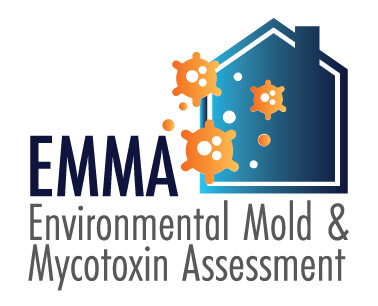Mycotoxin testing Services: A Trick Element in Danger Administration Techniques
Wiki Article
The Need of Mycotoxin Checking in Agricultural Products to Guarantee Consumer Safety
The necessity of mycotoxin screening in farming products is an essential aspect of public wellness and safety and security that calls for comprehensive exam. Mycotoxins, toxic substances produced by specific fungis, can infiltrate various crops, leading to significant health and wellness dangers for consumers, such as carcinogenic effects and body organ damage.Recognizing Mycotoxins
Mycotoxins, harmful additional metabolites generated by specific fungi, offer a significant threat to agricultural products and human health. These substances are generated by various varieties of mold and mildews, such as Aspergillus, Fusarium, and Penicillium, which can contaminate crops both pre- and post-harvest - Mycotoxin testing Services. One of the most usual mycotoxins consist of aflatoxins, ochratoxin A, fumonisins, zearalenone, and deoxynivalenol (DON)
Mycotoxin contamination can occur under details ecological problems, such as high moisture and temperature, which prefer the development of mold. Agricultural products like grains, nuts, seasonings, dried fruits, and coffee are especially at risk. The visibility of mycotoxins in these assets can result in significant financial losses as a result of minimized plant yields and the necessity for strenuous screening and purification procedures.
Recognizing the biochemical nature and development of mycotoxins is crucial for developing reliable mitigation strategies. Research has actually revealed that mycotoxins exhibit a variety of chemical structures and homes, making detection and elimination tough. Advanced logical strategies, including chromatography and mass spectrometry, are used to recognize and evaluate mycotoxins in farming items, guaranteeing that contamination levels stay within risk-free limits established by regulative bodies.
Health And Wellness Dangers of Mycotoxins
Provided the substantial risks linked with mycotoxins in agricultural products, recognizing their impact on wellness is critical. Mycotoxins, harmful second metabolites created by fungis, pose serious dangers to both animal and human health and wellness.Acute mycotoxin poisoning, although less common, can trigger prompt and severe health issue such as liver damages, stomach disturbances, and hemorrhaging. Ochratoxin A, another powerful mycotoxin, is linked to kidney damages and has prospective cancer causing results. Fumonisins, mainly affecting maize, are associated with esophageal cancer and neural tube issues.

Typical Resources of Contamination
Recognizing the typical resources of contamination is important for efficiently handling and mitigating the risks presented by mycotoxins. Mycotoxins are toxic additional metabolites produced by certain types of fungi, which can infect farming items at various stages of production, storage, and processing. The main sources of contamination consist of area problems, post-harvest handling, and storage space settings.Field conditions play a substantial duty, with variables like weather, crop sensitivity, and soil health affecting fungal development. Crops such as corn, peanuts, wheat, and tree nuts are especially vulnerable to mycotoxin-producing fungi like Aspergillus, Fusarium, and Penicillium species. Insufficient plant turning and poor insect management can worsen the threat of contamination.
Post-harvest handling is one more critical point where contamination can occur. Mechanical damages during harvesting and transportation creates entry points for fungi, while inappropriate drying out methods can leave wetness levels high enough to support fungal growth.
Storage space environments add considerably to contamination risks. Improperly preserved storage facilities with high moisture and temperature level levels create optimal conditions for mycotoxin production. Routine evaluations and proper storage space conditions are crucial in suppressing this risk.
Mycotoxin Testing Methods
Efficient management of mycotoxin contamination hinges not just on identifying potential resources but also go to website on carrying out robust screening techniques to discover these harmful substances. Mycotoxin screening approaches can be broadly classified into chromatographic and immunochemical strategies.On the various other hand, enzyme-linked immunosorbent assay (ELISA) and lateral circulation assays project immunochemical methods. ELISA, in particular, is widely used due to its cost-effectiveness, ease of usage, and fast turnaround time. Lateral circulation assays give quick, on-site testing capacities, making them ideal for field applications where immediate decisions are essential.
Additionally, developments in molecular biology have presented PCR-based techniques with the ability of finding mycotoxin-producing fungi at hereditary degrees, supplying check an anticipating method to contamination threat. Incorporating these varied approaches enhances the reliability and comprehensiveness of mycotoxin detection, ensuring that farming items satisfy safety standards and shielding consumers from possible health risks.
Advantages of Regular Checking

Regular mycotoxin screening provides considerable benefits that dramatically strengthen farming safety and security and high quality. Mycotoxins, harmful compounds produced by specific fungi, can pollute food and posture serious health and wellness dangers, consisting of cancer and intense poisoning.
Additionally, regular screening helps in preserving the stability and online reputation of agricultural manufacturers. By carefully managing and keeping an eye on mycotoxin degrees, producers can prevent expensive recalls and lawful repercussions. This not just ensures conformity with strict international safety standards but likewise promotes consumer count on and commitment.

Final Thought
The necessity of mycotoxin screening in agricultural items is underscored by the considerable health and wellness dangers posed by these poisonous substances. Ensuring consumer safety and security requires the identification and elimination of infected products from the supply chain. Routine testing not just mitigates the danger of intense poisoning and chronic health issues however likewise supports compliance with security requirements. It enhances the credibility of producers and promotes count on within the agricultural supply chain, inevitably protecting public health and wellness.The need of mycotoxin screening in agricultural items is an essential aspect of public health and wellness and safety that necessitates complete evaluation. Mycotoxins, toxic substances produced by particular fungi, can penetrate different crops, leading to substantial wellness risks for consumers, such as cancer causing effects and body organ damage.Mycotoxins, harmful additional metabolites generated by specific fungis, provide a substantial risk to agricultural products and human health.Given the substantial risks connected with mycotoxins in agricultural items, understanding their effect on health is vital (Mycotoxin testing Services).The necessity of mycotoxin testing in farming products is underscored by the considerable wellness risks presented by these poisonous substances
Report this wiki page